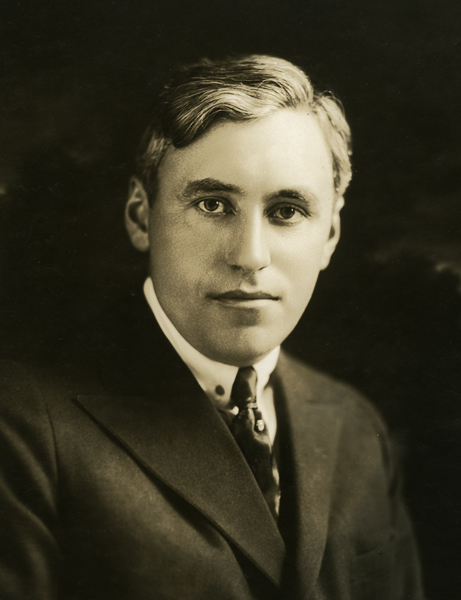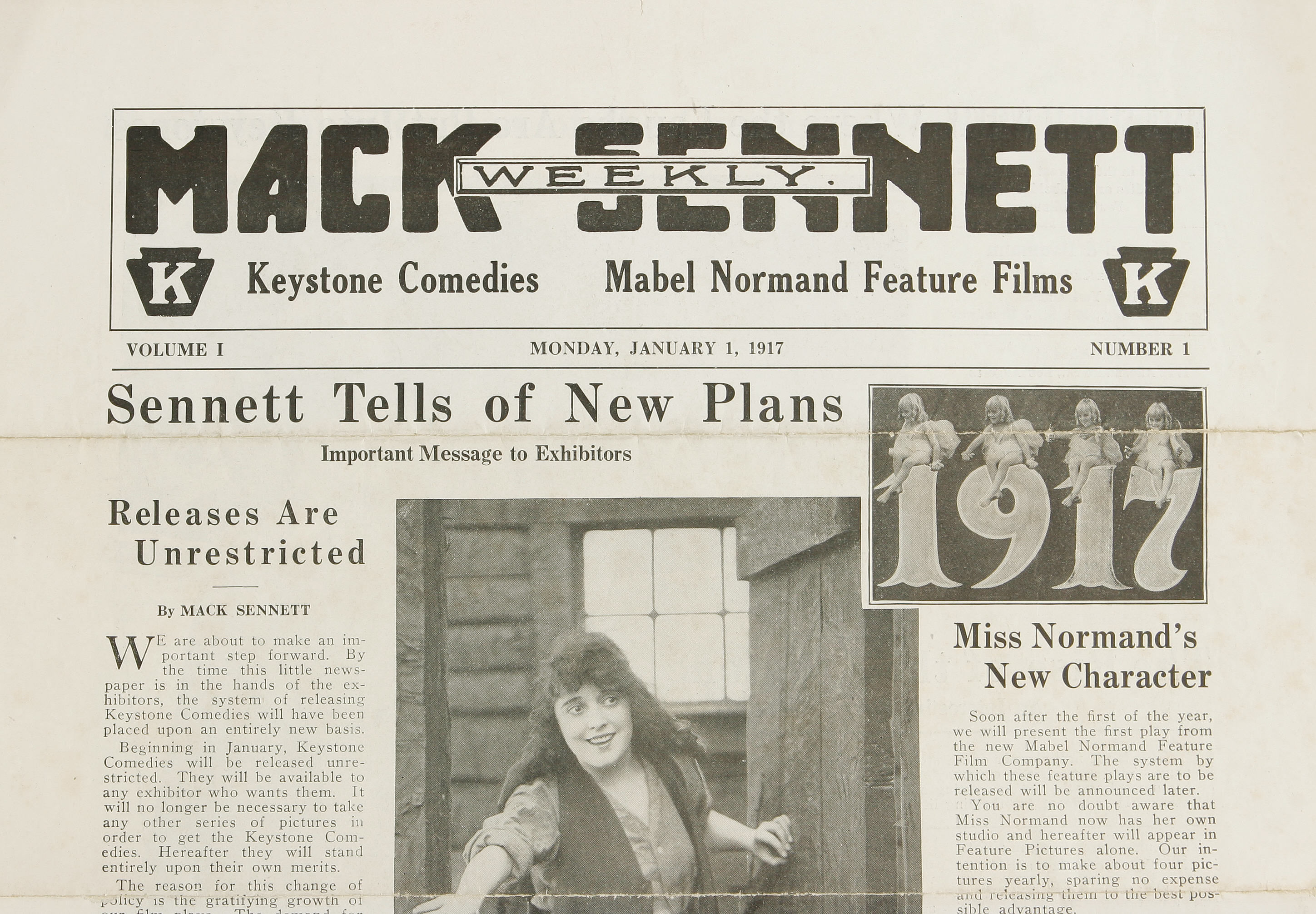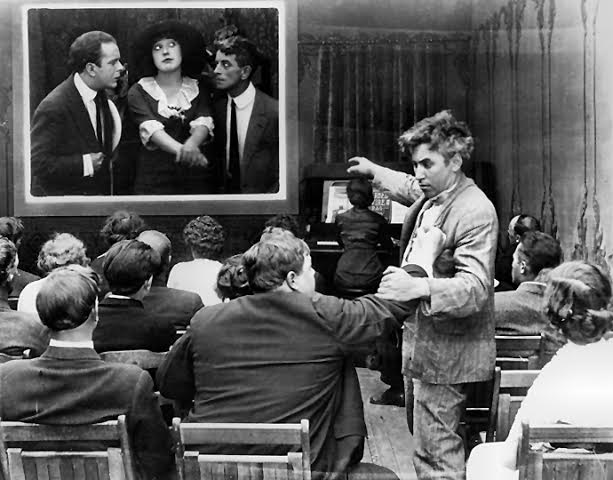 In this exclusive essay for The Archives blog, Brent E. Walker, author of MACK SENNETT’S FUN FACTORY, traces the survival of Sennett’s films – or lack thereof. His examination touches upon the influential roles played by the stars, the studios, and the home entertainment industry.
In this exclusive essay for The Archives blog, Brent E. Walker, author of MACK SENNETT’S FUN FACTORY, traces the survival of Sennett’s films – or lack thereof. His examination touches upon the influential roles played by the stars, the studios, and the home entertainment industry.
My first exposure to the films of Mack Sennett came at about age 7, via a television airing of Robert Youngson’s compilation WHEN COMEDY WAS KING. This film featured short clips from classic shorts, starring Charlie Chaplin, Mabel Normand, Roscoe “Fatty” Arbuckle, Gloria Swanson, Bobby Vernon, Harry Langdon, Ben Turpin and Billy Bevan. (Several of the films excerpted in that 1960 compilation appear on THE MACK SENNETT COLLECTION, VOL. ONE, including Fatty and Mabel Adrift, Teddy at the Throttle and Super-Hooper-Dyne Lizzies.)
My appetite for classic silent comedy in general, and Mack Sennett in specific, was further whetted through viewings of 8mm films at pizza parlors and Disneyland’s Main Street Cinema. These viewings led to the ultimate next step for a youthful film enthusiast in the 1970s: the purchase (thanks to scrimped-away allowance money) of Regular 8 and Super 8 format movies (from companies such as Blackhawk Films), and a projector to show them on. Small format films could also be checked out at local libraries, as could books that provided a few tidbits of information about Mack Sennett and his films, mostly about his ground-breaking early Keystone comedies. But the lack of an all-encompassing historical document about Sennett, his films, and those who appeared in those comedies and helped him make them, led me on a quest that several decades later resulted in my book, MACK SENNETT’S FUN FACTORY.
Mack Sennett had a long and successful run as the operator of an independent film studio–beginning in 1912 during the “Nickelodeon” era of early silent films, and ending in 1933, at a time when sound movies and the era of the “Hollywood studio system” was well underway. During that 21 year period, Sennett released his films through a series of distributors. During his first five years as a studio head, Sennett did business under auspices of the Keystone Film Company, whose famous comedies were distributed first by Mutual, and later by Triangle. Sennett left Keystone in 1917 to go truly independent, and distributed his silent films through Paramount, then Associated First National, then Pathé. In the sound era, Sennett’s films were handled by the Educational Film Exchange (whose specialty, belying its name, was comedy shorts, not educational films) and Paramount (for a second time, during his final year of operation in 1932-33).
As I studied these films, I began to realized that the majority of Sennett-produced silent films that were widely available came from either the Keystone period (1912-17) or the Pathé period (1923-29). Every Sennett clip that had appeared in WHEN COMEDY WAS KING came from one of these eras, as did the majority of the 8mm home format prints offered by Blackhawk Films. Blackhawk offered only one film from Sennett’s silent Paramount era (Hearts and Flowers), and none from his First National period. Another company called Film Classics Exchange had a few more Paramounts, and a couple of First Nationals, but still not many in comparison to Keystone and Pathé.
Survival rates of silent films are very low, with some major stars (such as Theda Bara) represented by only one or two surviving films today by which to analyze their work. Often, the survival of a particular film title is aided by it being reissued for theaters, home movies and television at a later date. And the determination upon which films were reissued came from several factors. One was the popularity of the star.
That is the reason that, up until just about four years ago, it was believed that 34 of the 35 films Charlie Chaplin made for Keystone in 1914 (34 shorts and one feature) survived. The lone missing film was believed to be Her Friend the Bandit (though Chaplin’s appearance in this film will not be 100% confirmed until if and when it is found–which seems fairly unlikely at this point). Then, in 2010, THE MACK SENNETT COLLECTION, VOL. ONE co-producer Paul Gierucki discovered a film called A Thief Catcher, which is on the Volume One set. Chaplin’s appearance as a Keystone cop in this film upped his Keystone appearance total to 36 films. Some of the other Keystone Chaplin short films were believed lost for decades until their re-appearances, often in battered and dupey reissue prints in smaller gauges like 16mm and 9.5mm. It has only been in recent years that efforts have been made to combine higher quality surviving 35mm prints from these films with footage from smaller gauge prints filling in any missing footage–such as Recreation on this set, and the entities making up the “Chaplin Keystone Project” who restored the films seen on Flicker Alley’s CHAPLIN AT KEYSTONE set.
 Other factors that influenced whether films were reissued (thus allowing for a higher chance of survival), was the success and failure of a given film organization, and also the distribution company’s involvement with the home market. Certainly, many Keystone comedies were reissued due to their popularity with audiences, and the star quotient of such stars as Chaplin, Mabel Normand and Roscoe “Fatty” Arbuckle. However, Keystone was also a company that ceased to exist in 1918, about a year after Mack Sennett himself had severed relations with the organization. Ownership of Keystone film rights fell to Harry Aitken, the man who headed the Triangle Film Corporation, and who subsequently assumed legal ownership of Keystone’s original parent organization, the New York Motion Picture Company. With no new pictures to distribute after Triangle itself folded, Aitken began reissuing old Keystone product under a number of company names, or leased it to other reissue organizations. Later, around 1921, Aitken was sued by several of his former partners and business associates for financial improprieties. When Aitken lost the suit, more Keystone product was reissued to satisfy creditors.
Other factors that influenced whether films were reissued (thus allowing for a higher chance of survival), was the success and failure of a given film organization, and also the distribution company’s involvement with the home market. Certainly, many Keystone comedies were reissued due to their popularity with audiences, and the star quotient of such stars as Chaplin, Mabel Normand and Roscoe “Fatty” Arbuckle. However, Keystone was also a company that ceased to exist in 1918, about a year after Mack Sennett himself had severed relations with the organization. Ownership of Keystone film rights fell to Harry Aitken, the man who headed the Triangle Film Corporation, and who subsequently assumed legal ownership of Keystone’s original parent organization, the New York Motion Picture Company. With no new pictures to distribute after Triangle itself folded, Aitken began reissuing old Keystone product under a number of company names, or leased it to other reissue organizations. Later, around 1921, Aitken was sued by several of his former partners and business associates for financial improprieties. When Aitken lost the suit, more Keystone product was reissued to satisfy creditors.
For these reasons, a large number of a Keystone comedies were reissued. Some, particularly those once offered for home sale by Blackhawk films, such as Bangville Police, Fatty and Mabel Adrift and Teddy at the Throttle, have remained in the public eye for many decades. Others were reissued only once or twice, and in a small number of prints. In those cases, we have the film collectors who purchased them originally, and collectors who acquired the prints in later years to thank for their re-emergence many decades after they were believed lost to the general populace. (A number of those films believed lost, but saved by collectors, appear on THE MACK SENNETT COLLECTION, including On His Wedding Day, A Fishy Affair and The Great Toe Mystery.)
Additionally–for a majority of the Keystone-Mutual comedies of late 1914 through fall 1915–their survival is largely due to a trio of strange bedfellows: film pirates, Mack Sennett and the Library of Congress. Until about 1912, the Library of Congress required each film submitted for copyright to be accompanied by a “paper print”: literally, a long roll of 35mm wide paper featuring a positive contact print of the film. Mack Sennett and his bosses at the New York Motion Picture Company (Adam Kessel and Charles Baumann) rather cavalierly had neglected to copyright any of their films from the beginning in 1912, through much of 1914. However, the comedies’ immense popularity–enhanced by an even greater reception for their new star Charlie Chaplin–resulted in many Keystones being bootlegged by film pirates. After taking a few film bootleggers to court, Keystone began copyrighting its films in the fall of 1914. In doing so, they also took the by-then-unnecessary step of submitting paper prints of the films to the Library of Congress. As a result (though original prints do exist of some of these titles) many Keystones of this period survive only via these paper prints. Examples of titles from the “Keystone paper print era” on THE MACK SENNETT COLLECTION are A Bird’s a Bird and Gussle’s Day of Rest. (It should also be noted that the majority of Sennett’s Biograph titles from 1908 to 1912–such as The Curtain Pole and A Dash Through the Clouds–exist because of the paper prints submitted to the Library of Congress by that company.)
Many of Sennett’s comedies distributed during the years 1923-29, by the Pathé Exchange, survive largely due to Pathé’s very aggressive pursuit of the home movie market, beginning around 1922 with its “Pathé Baby” program–issuing shorter versions of two-reel comedies in home gauges such as 9.5mm. (We have Pathé’s home movie releases to thank not only for the survival of Mack Sennett’s 1920s films, but also many of his chief rival Hal Roach, who had been distributing through Pathé since the mid-1910s.) Though numerous Pathé Sennett two and three reelers survive complete (and from 35mm nitrate print sources), others exist today only in truncated one reel and half-reel versions via Pathé home market releases. Sometimes, a film can be restored to a near-complete version with the combination of incomplete footage from a variety of sources, as was done on THE MACK SENNETT COLLECTION with the film A Rainy Knight.
Often (somewhat ironically), the chance of survival for some silent films can be doomed inversely due to the success of the company distributing them. That is the case for many Mack Sennett Comedies released through Paramount during 1917-21–considered the “holy grail” period of Sennett due to the scarcity of examples from this era. Paramount Pictures was formed in 1914, as the conglomeration of several companies including Adolph Zukor’s Famous Players, and the Jessie L. Lasky Motion Picture Company. One hundred years later, Paramount is still going strong. Paramount is arguably the company that had the most influence on creating Hollywood’s “studio system” during its rise in the late 1910s, when it created the model of a large studio which owned and operated its own theater chain which controlled all films on its program–features, shorts, newsreels and cartoons. This period coincided with the period when Mack Sennett was distributing its product through Paramount.
When Sennett left Paramount in 1921, he sold his 78 two-reelers back to Paramount. Though Paramount did reissue a handful of Sennett comedies in the early 1920s (and some of those do survive), the majority of the Sennett-Paramount films presumedly languished in studio vaults until they deteriorated, or were discarded–like many of Paramount’s other silent films. Paramount was too busy producing new pictures to worry about reissuing old ones, particularly after sound arrived in Hollywood and silent films became “passé.” As a result, less than two dozen of Sennett’s 78 Paramount comedies survive. Two of the survivors appear on THE MACK SENNETT COLLECTION: Hearts and Flowers and Don’t Weaken. The latter is an extreme rarity, and was carefully assembled from two different archival sources for the restoration that appears on the Blu-ray/DVD set.
 After leaving Paramount, Mack Sennett became part of a short-lived company called Associated Producers, featuring a number of producers (including Thomas Ince) banding together to form their own company, not unlike the organization formed in 1919 by Douglas Fairbanks, Mary Pickford, Charlie Chaplin and D.W. Griffith called United Artists. (One of the films on THE MACK SENNETT COLLECTION is a 1920 feature film that Sennett distributed through United Artists prior to forming Associated Producers, Down on the Farm. Long available only in a two-reel condensation, this release marks the first appearance of the complete film in any format going back to its original theatrical release.)
After leaving Paramount, Mack Sennett became part of a short-lived company called Associated Producers, featuring a number of producers (including Thomas Ince) banding together to form their own company, not unlike the organization formed in 1919 by Douglas Fairbanks, Mary Pickford, Charlie Chaplin and D.W. Griffith called United Artists. (One of the films on THE MACK SENNETT COLLECTION is a 1920 feature film that Sennett distributed through United Artists prior to forming Associated Producers, Down on the Farm. Long available only in a two-reel condensation, this release marks the first appearance of the complete film in any format going back to its original theatrical release.)
The Associated Producers company lasted only a year or two, before being gobbled up by the larger Associated First National company. Several years later, First National itself was merged to become part of Warner Brothers. Sennett released some shorts through First National in 1921-22, such as Gymnasium Jim. Sennett sold the rights to his First National comedies to Warner Brothers in the late 1930s, and because of that Warner reissued footage from a number of Sennett’s films as Vitaphone shorts in the 1940s, featuring narration and music.
In addition to the more-than 1000 short subjects he made from 1912 to 1933, Mack Sennett also produced 18 feature-length films. A majority of these survive, including the aforementioned Down on the Farm, and The Extra Girl, both on THE MACK SENNETT COLLECTION. However, one of the more intriguing feature titles in Sennett’s canon is The Crossroads of New York: a film which went through many titles and production delays on its way to being finally issued in 1922. Part of what makes the film so interesting is the fact that it was largely intended as a dramatic film, with a few comic interludes. No material from this film was believed to survive, until a very short clip surfaced recently in a European archive. However, THE MACK SENNETT COLLECTION, VOL. ONE features a very rare trailer from the feature which includes a few film clips–the only other material known to exist.
Sound films were considered far more lucrative than silent films when, in the 1940s, fledgling television stations across the United States began seeking programming to fill their time slots. As a result, a majority of Mack Sennett’s sound films (released by Educational and Paramount) are known to exist, though most are not widely seen or accessible. The survival rate of Sennett films from 1932-33’s Paramount era are far greater than those of his earlier 1917-21 Paramount era. Nonetheless, many have only been viewed for years in battered or altered prints. Cinemuseum has restored such classic Sennett-produced W.C. Fields two-reelers as The Dentist and The Fatal Glass of Beer to sparkling versions unlike any seen since the films were first released, and they appear on THE MACK SENNETT COLLECTION, VOL. ONE.


